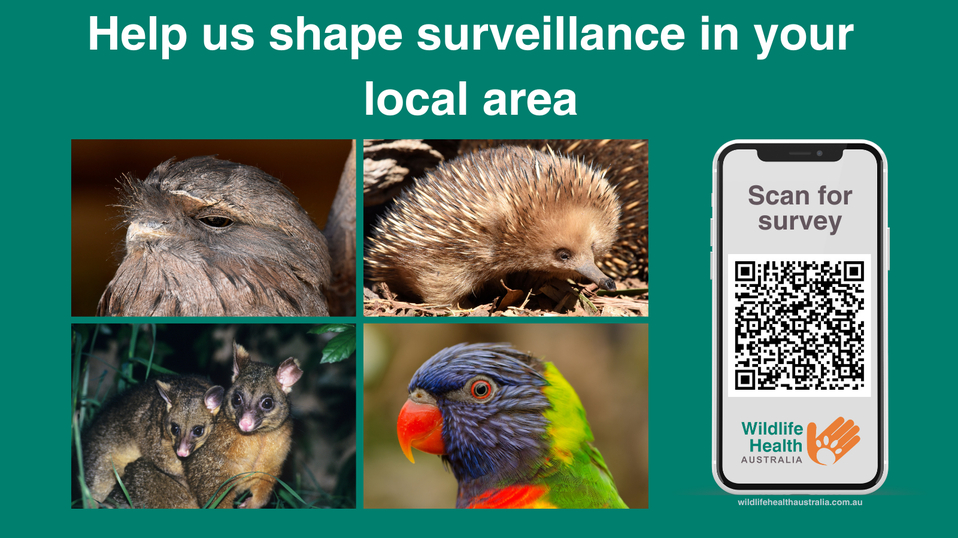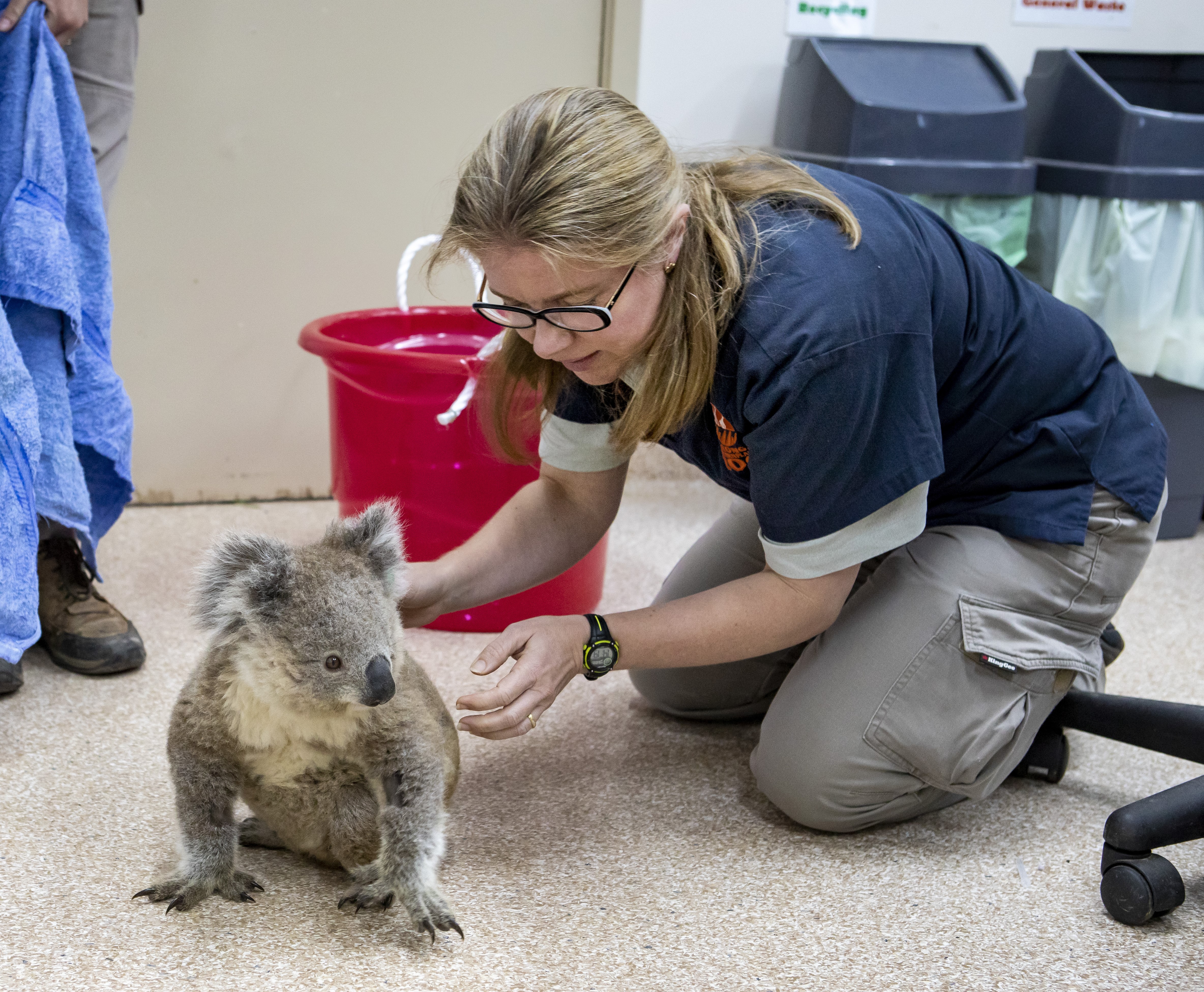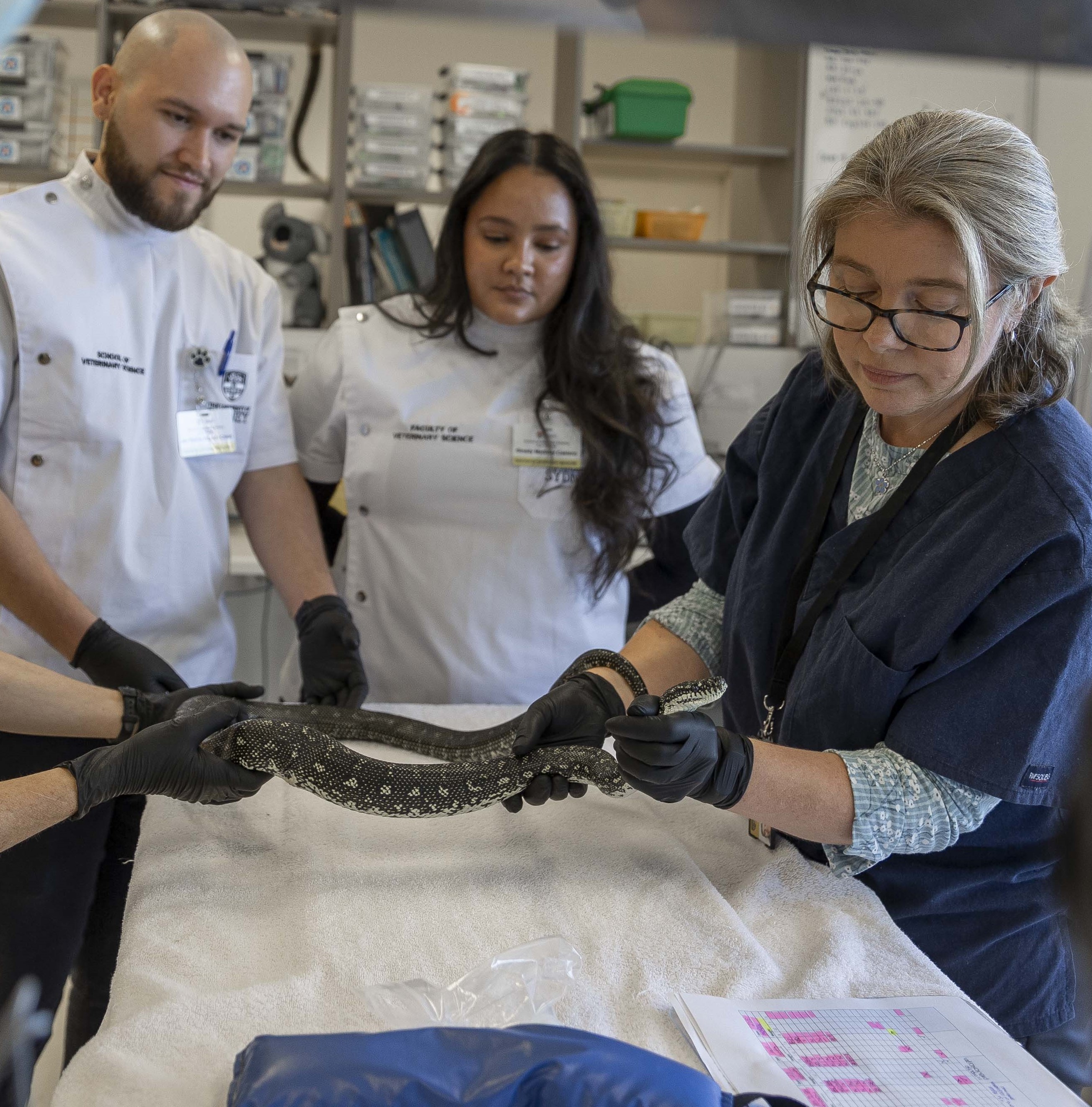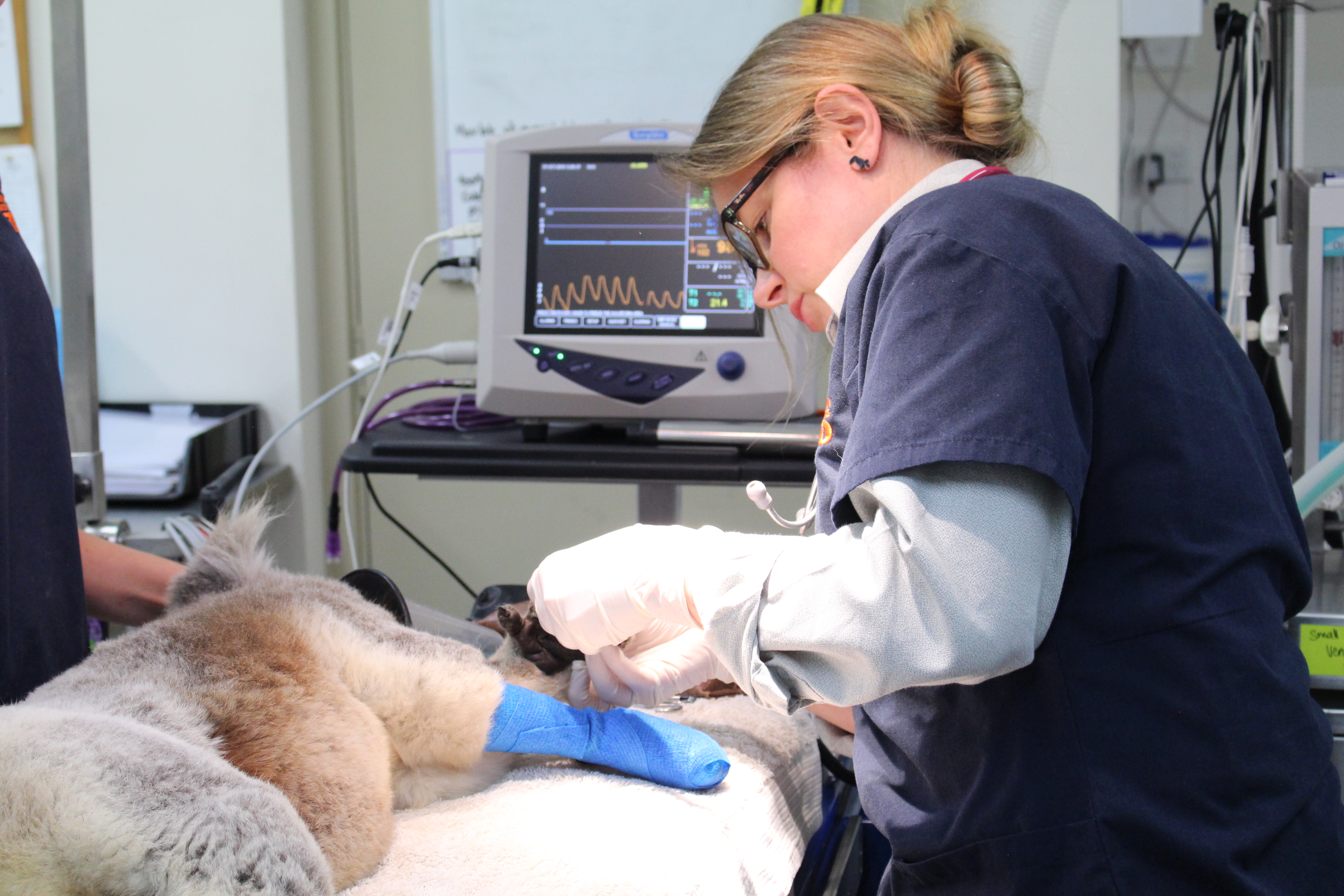Wildlife health surveillance survey – helping wildlife in your local area
03 Jul 2024
Last month we shared a request from Wildlife Health Australia to help design an expanded wildlife disease surveillance network. The survey is open until Tuesday 9 July.
Today we bring you Dr Michelle Campbell-Ward’s experience with the Wildlife Disease Surveillance Program. Dr Campbell-Ward is an Australian Veterinary Conservation Biology executive committee member and Wildlife Health Australia board member.
Q&A with Dr Michelle Campbell-Ward
What is your role?
I am the Associate Professor in Wildlife and Avian Medicine at the Sydney School of Veterinary Science (Camden campus). I love the fact that my role includes elements of clinical work in our Wildlife Health and Conservation Hospital as well as undertaking research and teaching students. I have also been a clinical veterinarian with Taronga Conservation Society for over 15 years and still do some locum work for them.
 Caption: Koala assessment, Dr Michelle Campbell-Ward (credit: Taronga Western Plains Zoo)
Caption: Koala assessment, Dr Michelle Campbell-Ward (credit: Taronga Western Plains Zoo)
Do you do wildlife health surveillance and can you give us an example of that work
Every time we examine a wild animal casualty, we are informally doing wildlife health surveillance. Each individual patient gives us a snapshot of what is happening in the wild, and when you add up all the patients we see from a particular area over time, we get some really useful insights into how animals in the wild are coping with current conditions. Koalas are a great example. I worked at the Taronga Western Plains Wildlife Hospital throughout the years of drought that preceded the 2019-2020 bushfires. Over that period, we increasingly saw koalas from the central west of NSW arriving in a poor nutritional state with varying levels of dehydration and secondary disease, including organ failure and infectious diseases like chlamydiosis. Their health was directly reflective of their struggling habitat.
I have been involved in the Wildlife Health Australia national Wildlife Disease Surveillance Program both at Taronga and at The University of Sydney. More recently, in my role at our university clinic, I see koalas from a number of different populations from greater Sydney and surrounding districts. One particular location quite close to our hospital is unique in that it is home to a chlamydia-free population of koalas, but we know that chlamydia is an ever-present threat to them from nearby populations, on top of the more typical presentations like road trauma, dog attack and displacement due to habitat loss and degradation. All our koala patients are screened for chlamydia (and sometimes other diseases) through the Koala Health Hub, regardless of the reason for their admission to hospital. We employ very careful biosecurity measures to ensure that animals of different disease status categories remain isolated from each other, and emphasise the importance of this to the wildlife carers we work with.

Why is wildlife health surveillance important?
Whether we live in urban, regional or rural Australia, we share our environment with wildlife. Promoting their health and well-being is not only important intrinsically but also because it reflects the health of our shared environment and the risks to our own health (both physical and psychological) and that of other animals in our lives. If we don’t understand the health issues affecting wildlife and the factors that influence them, we can’t take steps to mitigate the risks and intervene in a sensible and measured way on their behalf and on behalf of our broader community.
How important is it to have access to shared national surveillance data?
Access to shared national wildlife health surveillance data is crucial. If we are observant and diligent, we can each get a sense of issues occurring locally, but without a wider perspective, the significance of what we are seeing may be lost. Sharing data promotes learning within the veterinary and wildlife communities and is vital for preparedness and early response to emerging issues. This can have important benefits for the quality of the medicine we practice, animal welfare, conservation, the wider environment, public health and our animal industries. It is important that all regions are represented; gaps risk us missing something important, and who knows where the next health threat will turn up?
Can you give us an example where this data became very important? What was the outcome?
Some years ago, I was involved in investigating a mass mortality of birds in my local area. Approximately 700 birds, mostly parrots, were found dead or dying over the course of only a few days in a relatively small riverine area. Testing and disease exclusions confirmed the birds had died from ingesting a toxic compound. That compound was readily available at the time through agricultural and pet stores and even in some supermarkets. The sharing of data at a national level identified that this was just one of several similar events that had occurred due to the same chemical, resulting in the deaths of thousands of native birds throughout the country. Reporting of the evidence gathered as part of this surveillance effort ultimately led to this chemical being reclassified, and access to it is now much more restrictive. As a result, the risks of both accidental and intentional poisoning have been reduced.
Caption: Koala assessment, Dr Michelle Campbell-Ward (credit: Taronga Western Plains Zoo)
What do WHA’s partner Sentinel Clinics do and why is it important? Can you give us an example of where that work has benefited wildlife populations or species?
Sentinel clinics report the types of wildlife cases they have seen each month to WHA, specifically highlighting individual cases or events that might be of particular significance e.g. if they are unusual in nature or a zoonotic disease is identified. Training is provided to a clinic representative on inputting this information into a national database. It’s a simple process and lots of support is available. The clinics also meet regularly, usually online, to discuss recent cases – this a great opportunity to get a feel for what others are seeing and how they work up cases to achieve a diagnosis. It’s a very collegial group that is always happy to share ideas, discuss diagnostic challenges and answer questions from other participants.
What is the WHA Sentinel Wildlife Disease Surveillance Program survey about?
Listening to the interests, needs and concerns of private veterinary practices and clinicians as it relates to their potential participation in wildlife health surveillance.
How important is it for vets, vet nurses and veterinary practice managers to contribute their information?
Vets, vet nurses and veterinary practice managers are the eyes and ears on the ground in local areas. Their insights and experiences are invaluable to help fill geographic and species gaps in our knowledge.
What is your message to people considering whether to participate in the survey?
Make yourself a cuppa, set aside just 5 minutes from your day-to-day work and share your thoughts with WHA. Regardless of your interest, exposure or level of experience with wildlife, your perspective on the kind of support that practices could use to participate in this kind of work will be truly invaluable and genuinely respected. It won’t take long, and you can consider it your bit of wildlife advocacy for the day.

